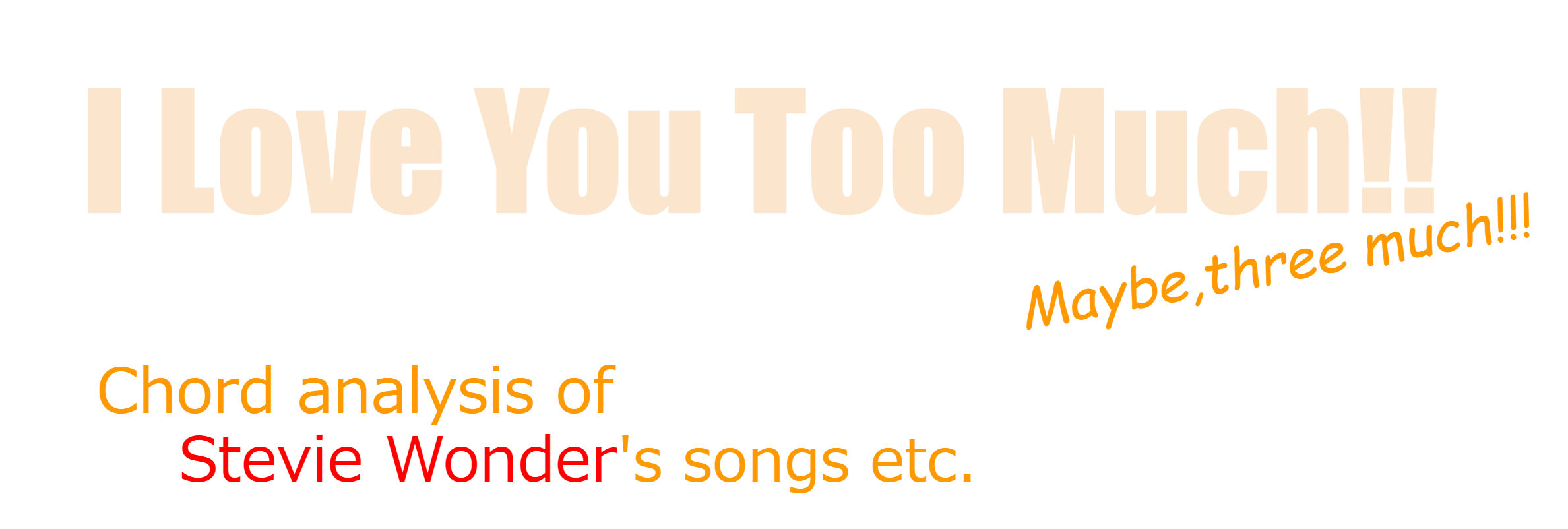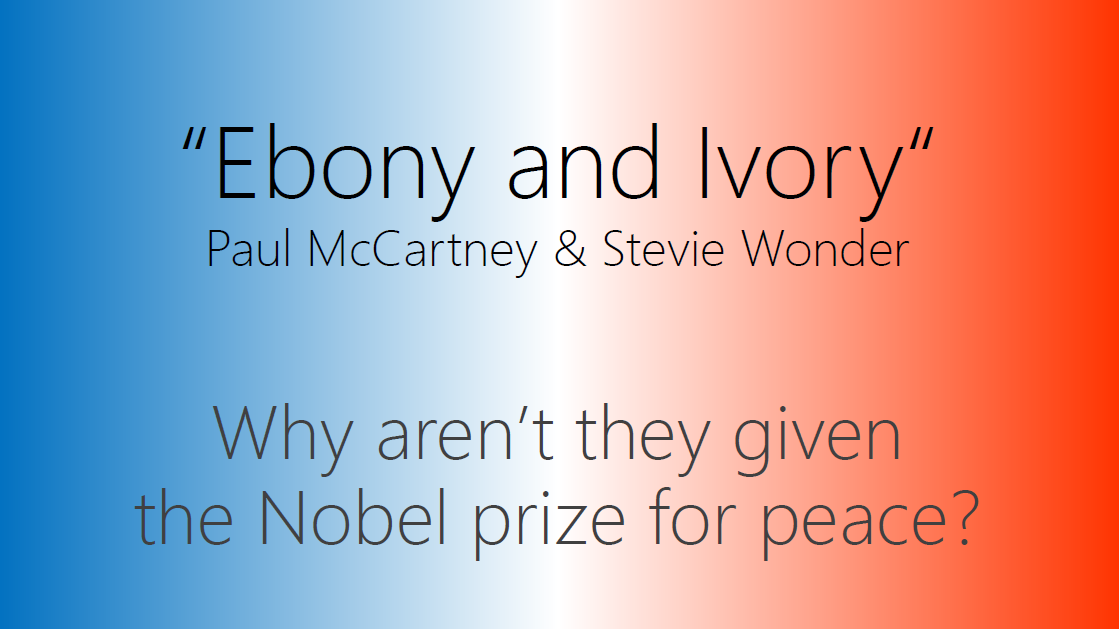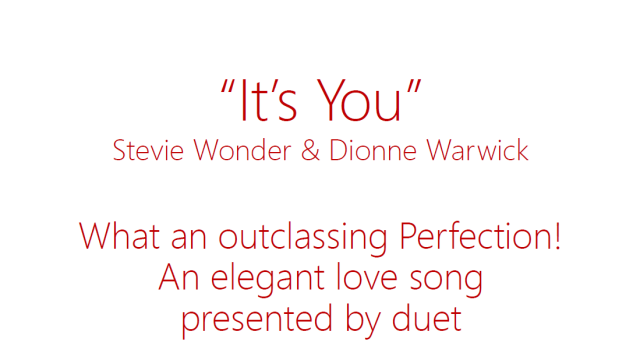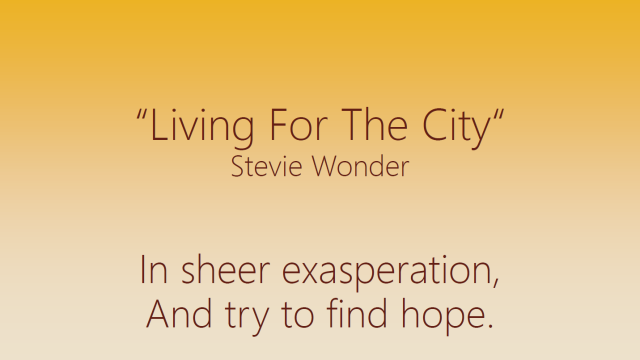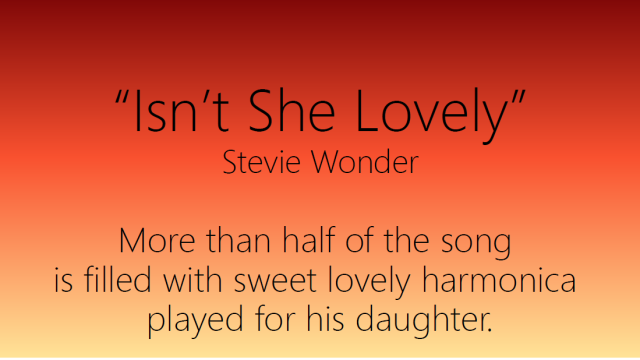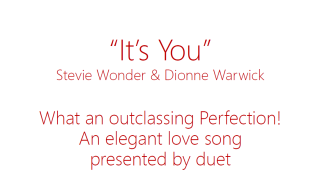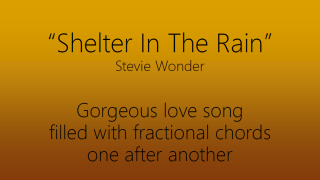Introduction
This song was released in 1982 with the strongest pairing of Paul McCartney and Stevie Wonder.
When I looked it up, I found that “Say Say Say” by Paul McCartney & Michael Jackson was released the following year, in 1983.
It was 1971 when the Beatles broke up after having so many hits, and less than 10 years after that, John was killed by a bullet.
Nevertheless, Paul was looking ahead and released the above two hit songs when he was still around 40 years old in 1983. He had been through a lot, but he was still young to be capable of composing hit songs one after another.
Stevie was eight years younger than Paul, so he was a little over 30 years old at that time.
And, as the title suggests, the song is sung out straightforwardly and joyfully at the top of their lungs like
“Ebony(The black keys) and ivory(white keys) live together in perfect harmony. Side by side on my piano keyboard, oh, lord, why don’t we?”.
“Ebony and Ivory” by Paul McCartney (1982)
There is no backward-looking criticism of racism, but rather a forward-thinking message in the music. And we can realize this quality. This is musicianship. This is the artist.
Don’t you think it’s worthy of the Nobel prize for peace, do you?…
Looking at the credits of “Tug Of War”, that is the Paul’s album containing this song, you’ll see Stevie playing drums.Well, that is okay.
Then, let’s check the chords up! They are affluent in the attractivity of Paul’s musical talent.
Tricky intro
An intro, that makes the listeners feel spoofed…
Somewhat odd to say this, while I set up they can be given the Novel Prize for peace…
It’s an impressive intro spreading hope softly and the chords progression is presented as below.

Do you feel complicated?
I also add the keyboard figures as below upon changing the key to C.

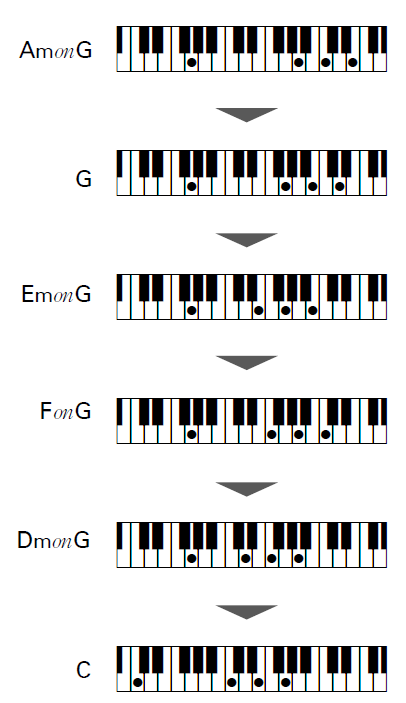
Keep on playing G as the root, and just shifting one skipped 3-finger chord up and down on the white keys,starting with Am lol!
Hey, Sir Paul ! Didn’t you make it out eventually while you played piano easily?
The following keyboard figures presents the chord progression on the original key. If you have a keyboard nearby, try to follow it.
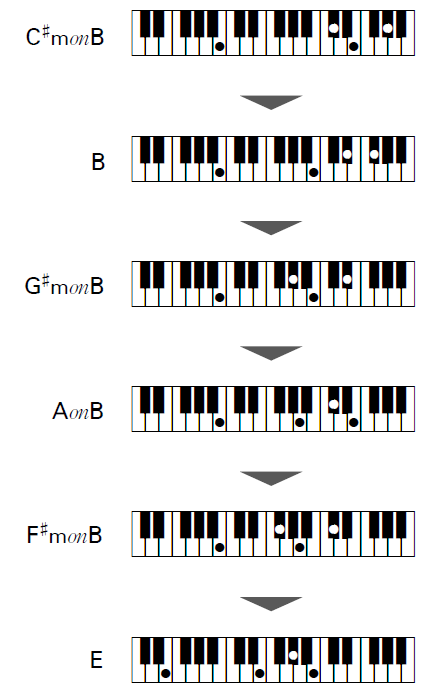
1st Verse
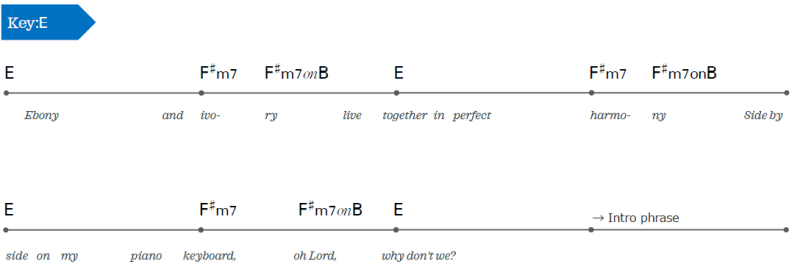
How beautiful…
No wonder, the first one phrase alone is much enough to knock me down. It’s just Paul’s melody.
The “ry” note of “♪ivory” is syncopation Paul frequently uses. In the original track, the bass line is not syncopated. However, in the performance at the White House, which I will introduce at the end of this entry, the bass guitar sounds in the “ry” part.
In the song named “Say, Say, Say” Paul co-composed with Michael Jackson, which I wrote at the beginning of this entry as well, we can near the syncopation in “wάnt” in the first phrase, “♪Say,say,say what you want~”. Chords progress regardless of bars restriction, that’s a technique of such exceptional talent, Paul McCartney.
2nd Verse (2nd verse and 3rd verse?)
The part of 3rd-verse-like is short, so here we go continuously, presented as below.
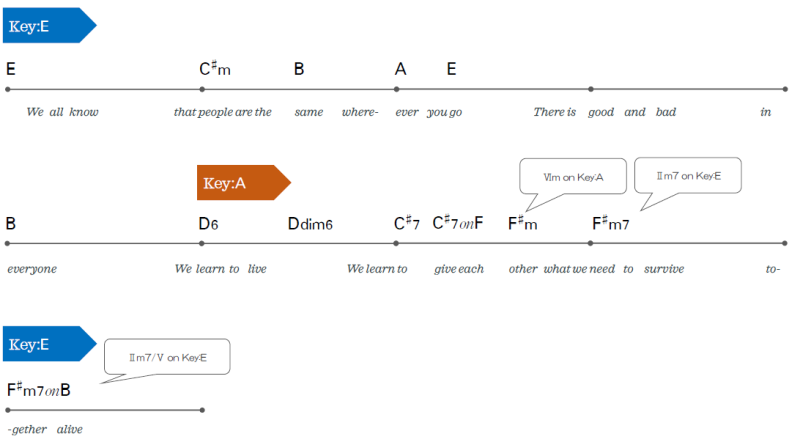
Talking about the part from “♪We all know~” to “♪ever you go” ,what we can wonder is that it takes 5 bars.
Paul doesn’t care such halfway bars but gets melody along with chords progression freely without any uncomfortable feeling, which is also a feature of Paul’s works. I guess himself is not really conscious of that but composing songs along whatever he feels like doing so, though.
Then, he applied syncopation again for “go” in part of “♪ever you go”.
And I think the 3rd verse starts from chord D6. But it is abrupt modulation upon insertion of such chord actually, which makes me guess on my own Stevie helped compose the song.
Do you feel the chord name difficult in this “♪We learn to live~” part? The fingerings are shown as the following figure, which lowers the middle two notes by a halftone.

The chords progress from F#m7 to F#m/B at the end and the goes back to Key:E.
By the way, Paul looks so enjoying singing in harmony in the 2nd verse of the 2nd chorus.
Bridge
At the end of the 1st verse, bring C#sus4 to C#, transpose to Key:F#, and enter the bridge.Finally, the chord is almost forced to move to F#m7/B and the key goes back to E.
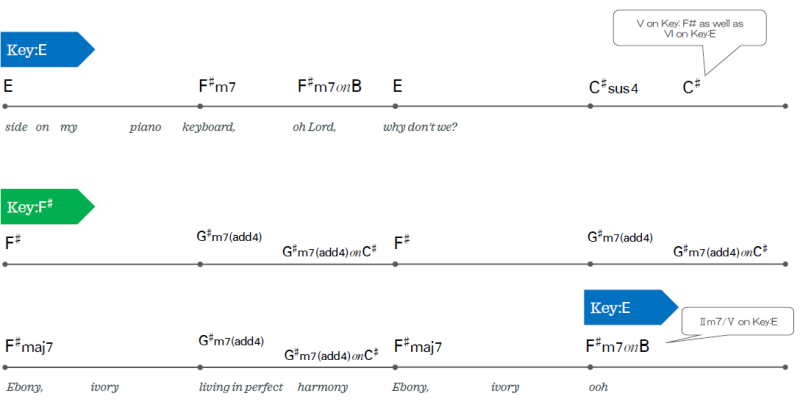
When I was young and listened to this song for the first time, the most impressed part for me was this bridge.
Isn’t it felt very peaceful part like people of different races are holding hands and smiling at each other in rhythm, is it?
The synths sound is timbre as Stevie loves indeed.
I applied such a complicated chord add4, because B note of minor third (isn’t called so?) also speaks and C note of major fourth does as well, so I thought it would be like this.
How about my idea to put fingers on keyboard as below?
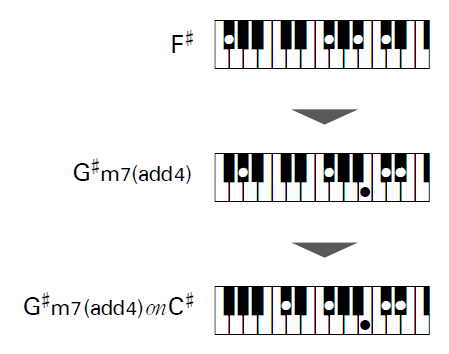
Vocal ending
I think it’s fine either way, but some scores are a little more complicated than others, so I thought I’d write it down. (Red part below)
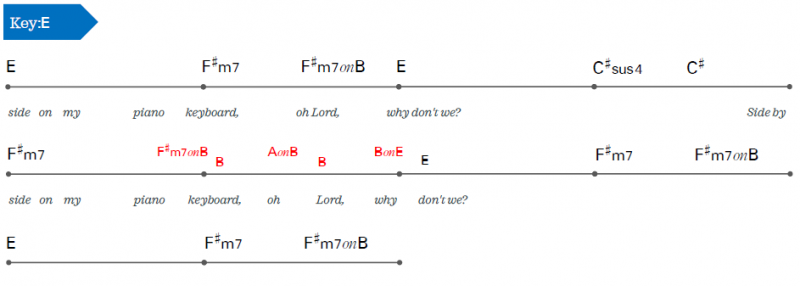
Bridge again
At the end of the song, the same bridge appears as before, and the key of previous one is Key:F#, but here it is still Key:E.
Is this the playing of the masters?
I’ll write down the key change from the previous bridge.

In Conclusion
When the song was first released and the video clip was produced, their schedules didn’t allow them to work together so the performance in the video had to be composite.
Sure, if we watch it closely, the border finishing between Stevie and the background looks a bit or mess and rough (lol)…
They are dressed in black and white, but once they took off their jackets in the middle of the video, you can see a bit that the colors turn around.
As such way, they might be so busy to work together ever for producing the official video clip. However, in 2010, when Paul received the Gershwin Award from President Barack Obama at the White House, you can watch the live show that the two old genius get together and sing this “Ebony And Ivory” dignifiedly and heartily.
The other performances on this DVD are also very impressive, so I strongly recommend it to you all.
“BLACK LIVES MATTER! ” movement is still fresh in our minds, but even in this age of global connectivity, the problem of racism is deep-rooted. I think it’s an issue that will take time to resolve, and it’s important to listen to, hum, pass on, and preserve such a wonderful song sung by two great people of the 20th century.
“Ebony, ivory, Living in perfect harmony~”
